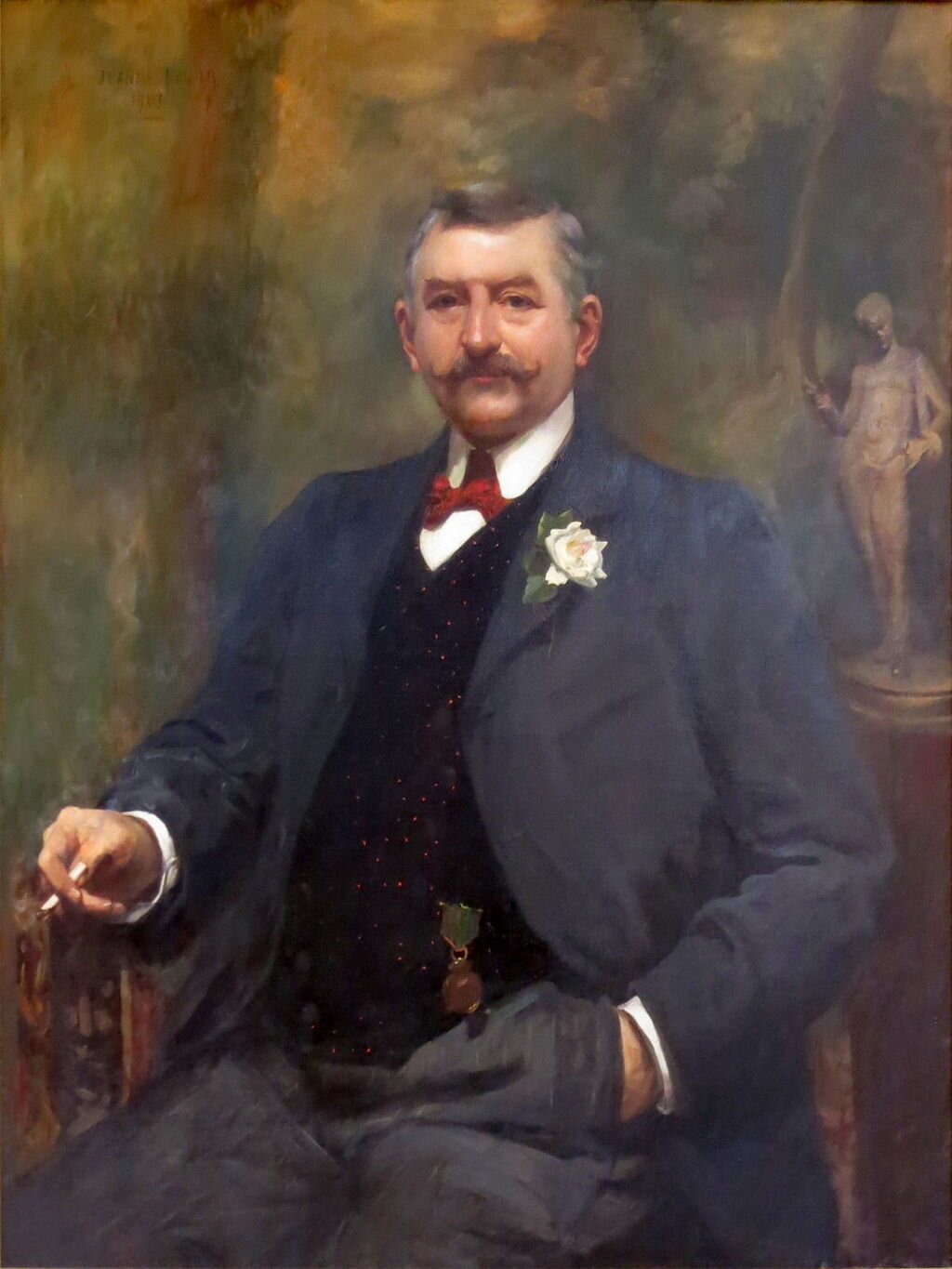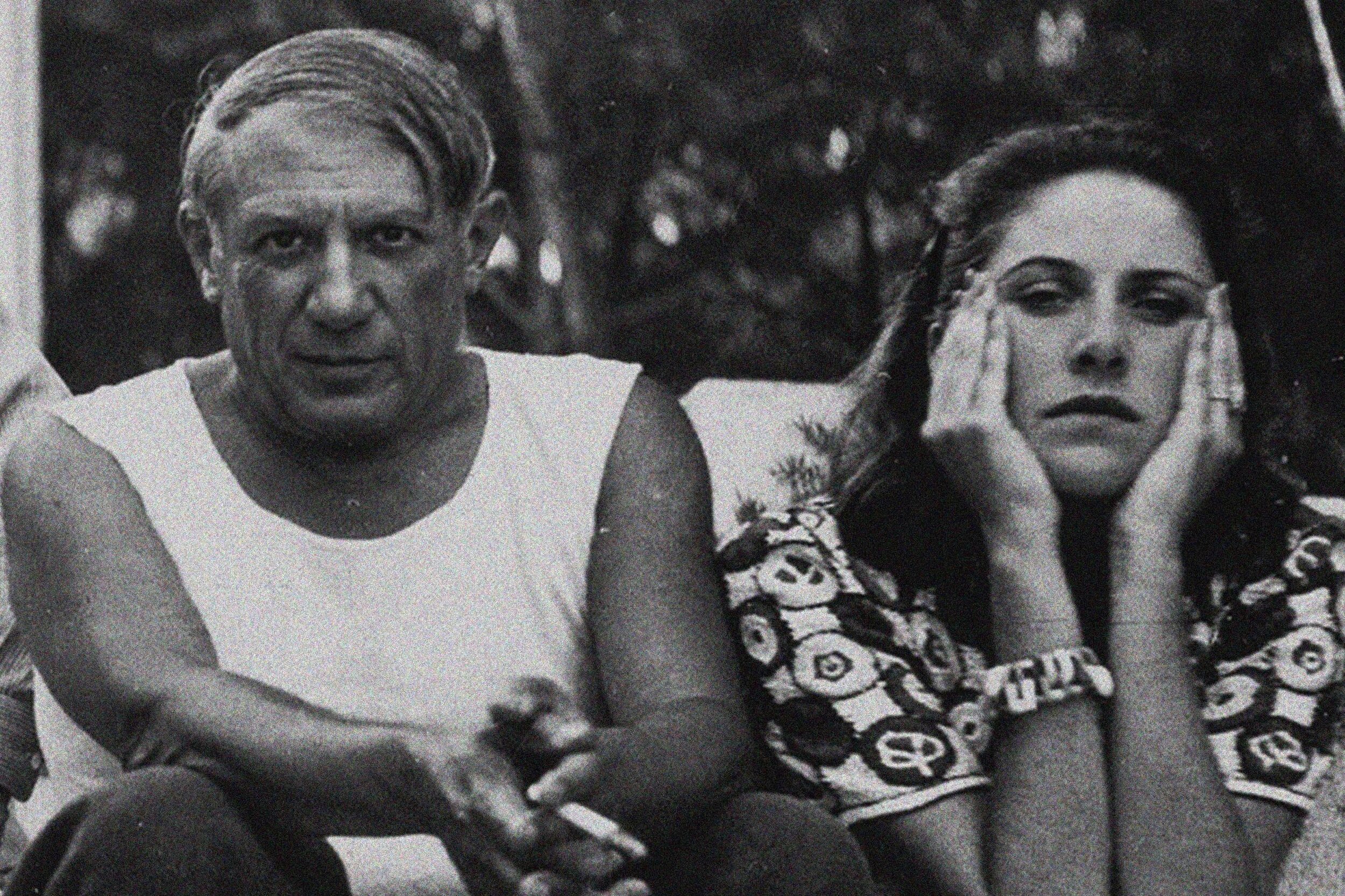Louis-Philippe commissioned twenty statues illustrious women in French history to fill the Jardin du Luxembourg. Involved in picking each and every lady as well as the artists they would come to life between 1845 and 1851.
Jeanne d’Arc was originally one of the twenty, bien sûr, but was removed and placed in the Musée du Louvre in 1872. The statue by Francois Rude was deteriorating rapidly in the Paris weather but today can be seen in the Louvre’s Cour Puget.
Starting on the eastern side near the Palais du Luxembourg:
Saint Bathilde
626/627 - 30 January 680
Wife of Clovis II, King of Burgundy & Neustria. As a young girl she was sold into slavery by Danish raiders that kidnapped her in Saxon and sold her to Erchinoald, Mayor of the Palace of Neustria. Bathilde married Clovis in 650 and they had three children before he died in 657. As Regent for her son Clotaire she abolished childhood slavery and changed the tax code that led to it.
Statue by Louis Victor Thérasse, student of James Pradier.
Commissioned in 1845, finished in 1848
Reine Berthe
720 - 783
Betrothed to Pepin the Short, future King of the Franks. On the way to court to meet Pepin, her dastardly cousin Tybers thought his own daughter resembled the beautiful Berthe and hatched a plan. On the way, he tied Berthe up and was planning on killing her until a kind hearted soldier overheard and let Berthe escape. Tybers arrived at court with his daughter Aliste posing as Berthe and the charade would last a few years until Berthe’s mother Blanche-Fleur de Prum arrived. Berthe had one distinct physical feature that could not be faked, she had a club foot. The scam was finally uncovered and Berthe was found in the forest of Le Mans by Pepin who was out hunting. The two would marry in 734/735 and on April 2, 748 she gave birth the Charles, later known as Charlamagne
Statue by Eugène André Oudine
Commissioned in 1846, finished in 1848
Reine Mathilde
1031- 2 November 1083
Daughter of Count Baldwin V of Flander & Adele de France. A marriage to her third cousin William, son of Robert I, Duke of Normandy was decided but she wasn’t too excited about the idea as he was a bastard and not a true blood royal. When he heard he rode his horse from Normandy to Bruges finding her in a church and dragging her into the street. The two were married in 1051 and he was named the king of England in 1066, but she preferred to stay in Normandy until 1068 when she would be crowned queen of England.
Statue by Marie Carle Vital Elshoecht
Commissioned in 1846, finished in 1848
Sainte Geneviève
423 - 512
The Patron Saint of Paris who at just seven years old devoted her life to God and was blessed by Saint Germain of Auxerre. When Atilla the Hun was headed to destroy Paris, she gathered everyone at the banks of the Seine to pray. Atila and his men changed course and headed to Orleans. In 464 she saved hungry Parisians by navigating the blockades on the Seine to gather grain in Brie et Troyes to feed the citizens. Upon her death on January 3, 512 she was buried alongside King Clovis in the abbey Sainte Geneviève built for her. Another one of our ladies, Sainte Clotilde wrote the story of her life and her path to sainthood.
Statute by Michel-Louis Victor Mercier, student of James Pradier
Commissioned in 1843, finished in 1845
Mary Stuart, Queen of Scots
8 December 1542 - 8 February 1587
At just six days old she was named queen of Scotland when her father James V died. Her mother served as regent and at five years old she was sent to France and betrothed to Francis II, son of Henri II and Catherine de Medicis. Raised together they were very close and would be married at Notre Dame de Paris in 1558. The wedded bliss would be short-lived when Francis II died just two years later in 1560. Mary returned to Scotland shortly after and began the long feud with her cousin, Elizabeth I of England. Elizabeth would later have her imprisoned and killed by beheading, even though the two would never meet face to face
Statue by Jacques Feuchères
Commissioned in 1843, finished in 1846
Jeanne d’Albret
16 November 1528 - 9 June 1572
Her father, Henri II of Navarre choices of spouses wasn’t to the liking of her uncle King Francois I so he decided to bring her to court. At just twelve years old she was married off to Guillaume, duke of Cleves but was less than thrilled about it. She had to be pushed and carried down the aisle. Four years later she was able to convince Pope Paul III to have the wedding annulled. After her uncle died in 1548 she was able to marry again to Antoine de Bourbon, who would be king of Navarre following her fathers death in 1555. In 1553, she gave birth to Henri III, future king of Navarre who would become Henri IV, king of France. As the Valois line was ending an agreement between Jeanne and Catherine de Medici was reached uniting her daughter Marguerite to Henri III with the stipulation that Jeanne not convert her daughter to Protestantism. Jeanne wouldn’t live to see the wedding as she died from the suspected poisoning at the hands of Catherine
Statue by Jean Louis Brian
Commissioned in 1843, finished in 1848
Clémence Isaure
The one statue that is based on a myth more so than a real person. In the 14th century the seven occitan poets of Toulouse held a gathering each year on May 1 to celebrate poetry. The Academy of the Floral Games as it would be known handed out silver and gold flowers each will to the top winners. In the 16th century poet Pierre de Saint-Anian wrote The ballad of the epitaph of the Lady Clémence Isaur, that added to the myth. Pierre wrote that she was the one that created the floral games and the rest is history.
Statue by Auguste Préault
Commissioned in 1844, finished in 1848
Anne Louise de Montpensier
29 May 1627 - 5 April 1693
The granddaughter of Henri IV was born to Gaston Duc d’Orleans, younger brother of Louis XII and Marie de Bourbon. Marie died days after her birth and as the end of the line of the Montpensier Bourbons a vast fortune was bestowed on Anne. The Grande Mademoiselle as she was known was the princess every man in Europe wanted to marry. As a teenager her father sent her to Orleans as his representative and rarely held her opinions inside. Eventually Louis XII grew tired of them and had her sent to the Chateau de Saint Fargeau for three years. Many suitors were proposed but she refused until she fell for Antoine de Caumont. A speedy wedding was planned before the union could be discovered but it would never happen. Caumont was only after her money and the wedding ended just in time. Anne would never marry or have any children and would die in the Palais du Luxembourg that she had inherited through her grandmother Marie de Medicis.
Statue by Camille Demesmay
Commissioned in 1846, finished in 1848
Louise de Savoie
11 September 1476- 22 September 1531
Daughter of Philipp II Duc de Savoie and Margaret de Bourbon who died when she was just seven years old. At eleven she married Charles d’Orleans who was 32 at the time but luckily wasn’t forced to live with him until she was fifteen. They had two legitimate children Marguerite in 1492 and Francois in 1494, he had many more children with his many mistresses. Louise loved everything of the Italian Renaissance and raised her children with an appreciation which would transform the court of France. Her husband died in 1496 and Louise took her children to live at the Hotel des Tournelles with Charles' cousin Louis XII. Without a male heir, he had his daughter Claude de France marry Francois and name him as his successor. On January 1, 1515 Francois I became the king of France at 15 years old. Extremely close, she stood by his side and served as regent when he was outside of France and helped negotiate the end of the 7th Italian war. When she died in 1531, Francois I held a funeral fit for a king in Notre Dame de Paris.
Statue by Jean Baptiste Auguste Clésinger
Commissioned in 1846, finished in 1851
Marguerite d’Anjou
23 March 1430 - 25 August 1482
Daughter of René, king of Naples was married by proxy on May 24, 1444 to Henry IV of England. She hoped she could help repair the rift between England and France with the marriage and for a short while it worked. Thousands of people lined the streets as she traveled down the street to be crowned in Westminster Abbey, but the love was short lived. Her husband Henry IV suffered bouts of insanity that could last up to a year and during the lowest points she would serve in his place. On October 13, 1453 she gave birth to Edward of Westminster, Prince of Wales that forced the Duke of York out of the running for the throne. Marguerite took her husband and son to Scotland and rallied the troops of Scotland and France to support her. Upon their return to England, Henry was captured and tossed into the Tower of London where he would die and the young prince was captured and killed. After Marguerite was also imprisoned a deal with Louis XI of France was reached returning her to France but without a title and any land or money.
Statue by Ferdinand Taluet
Commissioned in 1874, finished in 1877













































































